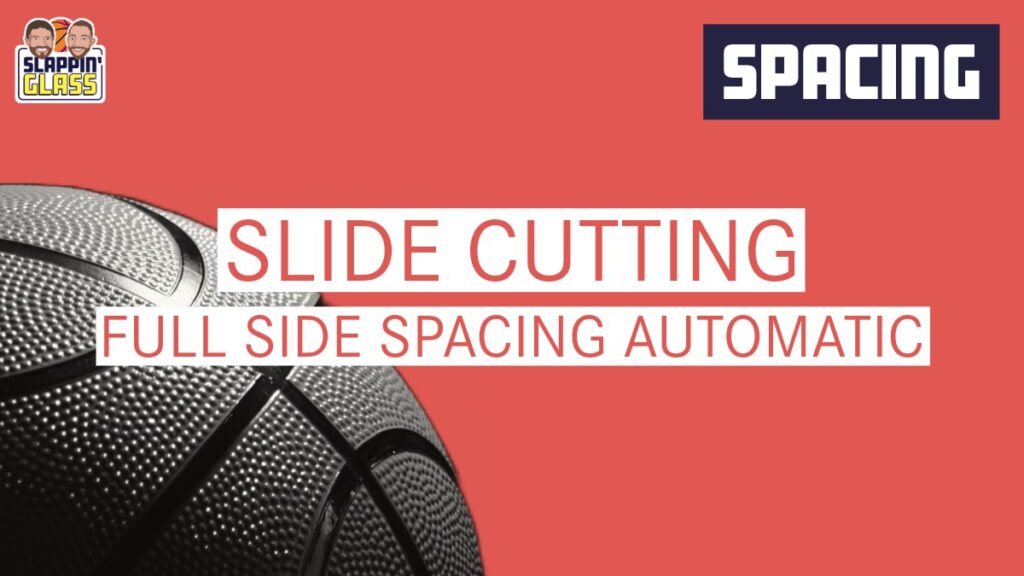As we continue to sift through and highlight some of the top strategic trends that winning basketball teams used in the 2024-25 season, such as flip screens {🔒} and stampede catches {🔒}, one concept has stood out above the rest: the versatility and effectiveness of Slide Cutting from the corner whenever the ball is being driven to the full side (two or more players) of the floor. Here’s an example…
Zooming In: The Slide Action is two cuts at once, one from the corner to the rim, and a simultaneous “slide/drift” cut from the wing to fill that now empty corner in an effort to open up gaps and punish stunts during penetration.
Through the use of this space clearing automatic, offenses are routinely able to generate catch and shoot corner 3-pt attempts and closeout situations…
Zooming In: As we will dive into soon, the aggressive nature of the baseline cut not only serves to open up space for the drift, but also effectively punishes hard stunts at the ball from the “High I” or “Nail” defender.
If opponents, anticipating the drift, become reluctant to stunt or sit in gaps, more space is allotted for the ballhandler to break the paint and play off 3v2 rim reads. Since many offenses normally hold the strong side corner, the baseline defender is susceptible to ball watching during the cut.
Gravity Creating Cut
One myth associated with this penetration automatic is that by cutting the strong side corner, the offense is potentially bringing an extra defender into the mix and crowding the paint (since the Big is also rolling down the opposite lane line). However, what bears out more times than not, is that the defender is out to lunch on the cut, expecting the offense to hold the corner (as shown above), or, more commonly, the defender stays so focused on guarding the cut that the lane for the ballhandler to attack into continues to open up.
When to Go?
Without a doubt, it is better to be early than late on this cut. From a timing perspective, the full side needs to read the action as it develops and initiate their cuts as the ballhandler begins to break the 3-pt line. Ideally, the corner cutter’s goal is to be at the rim when the ballhandler enters the paint.
Zooming In: With a well-timed and aggressive cut, the defender is too preoccupied with the cut to offer any help or close space on either the ball or the roller.
Spacing Versatility
Our departing thought on why we have admired this spacing automatic all season long is its remarkable versatility. For many teams, Slide Cutting is an “automatic”, and as such, is readily available off of any action that yields a penetration to the full side of the court. It is not a concept that always has to be designed or called, only triggered. Throughout today’s video breakdown we demonstrate its application in the ballscreen, isolations, zooms and more.
To better put it in context, let’s look at its application when coupled with the Flip Screen. Two concepts that can be completely randomized with devastating effects. As we discussed previously, the Flip Screen not only aims to attack the big in coverage but also the help responsibilities by quickly changing the shape of the floor. Flipping to shift the ballscreen from a shake ballscreen to a full side ballscreen or vice versa.
Zooming In: As shown above, in an effort to pop to the single side and the available space, the big flips his screen. In doing so, the ballhandler is forced to play to the short, full side of the court. Flipping the angle immediately triggers the two players on the full side of the court to Slide Cut, resulting in a catch-and-shoot three off a ball side stunt.
Looking at another way the Flip Screen and Slide Cut can solve spacing issues, this time the ballhandler rejects the flip screen to the short side of the floor in favor of attacking back to the full side, again, triggering the automatic Slide Action…
Zooming In: Even with the corner player just arriving after a space-clearing cut, he quickly adapts to the new situation unfolding off the penetration by making the required baseline cut to clear the corner for the 45 player’s drift.
Lastly, this Slide Cut action has secondary benefits besides the back cut, corner drift three, and rim attack options, as it also opens up opportunities for actions behind the Slide Cut as well. As we see more and more, teams are teaching the “stride stop” pivot on drives down the lane-line, and this Slide Cut opens up that space for players to play off two feet and either score for themselves, or find shooters filling behind the play…
For much more on the Slide Cut, SG+ Members can now enjoy this week’s newest breakdown on SGTV!
